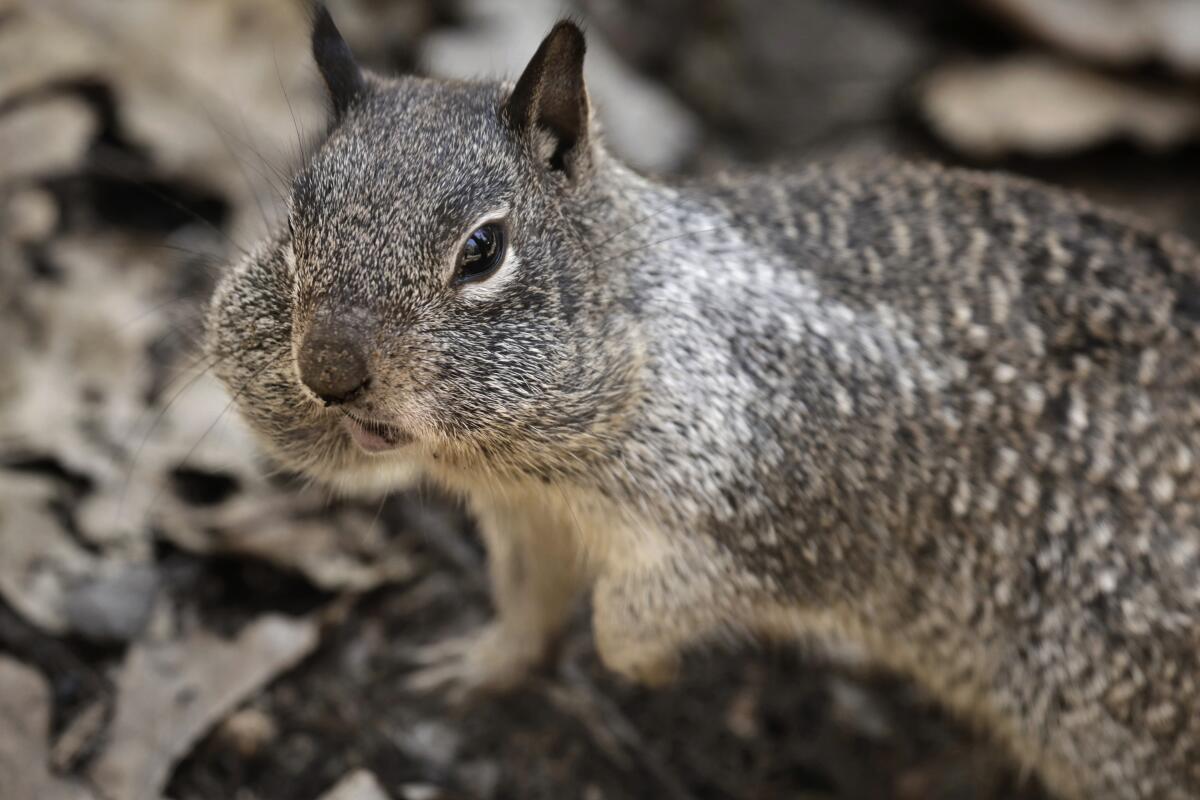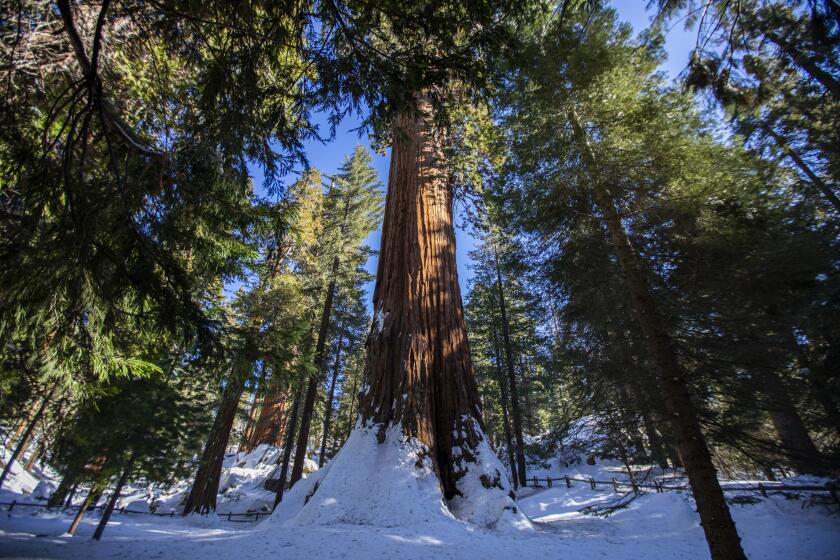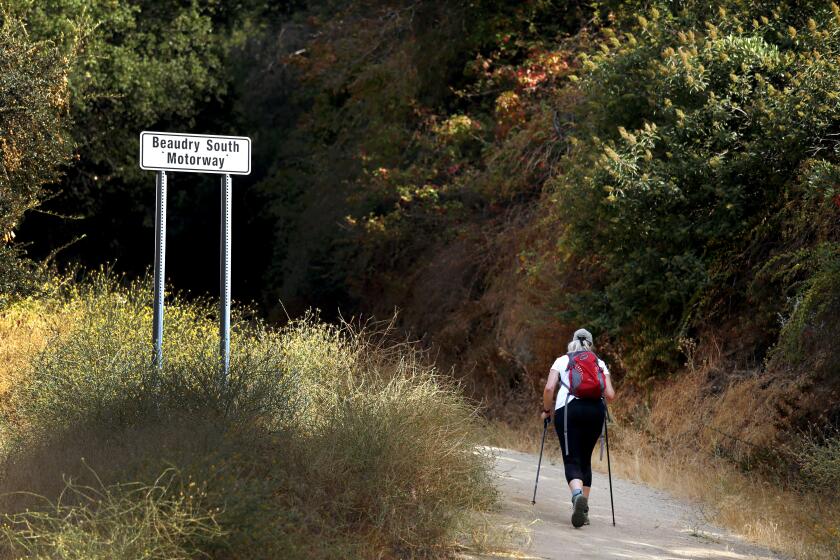A walk on the wild side? Why hikers could see more animals this Memorial Day weekend

- Share via
With Memorial Day weekend now upon us, residents across California will get out in nature and experience an ecosystem reshaped by a record-setting wet winter.
Wildlife experts say the rain has already started to improve habitats and populations for certain species — a trend they expect to reverberate through the entire landscape.
That likely means the region will be populated with more squirrels, rabbits, rats and snakes although, in some cases, it could take several months or longer to see the resulting surge in wildlife.
Larger animals, including those that might be cause for concern on the trail, may take even longer to see their populations boom, if they do at all, said Mackenzie Rich, a human-wildlife conflict specialist at the California Department of Fish and Wildlife.
After the heavy rains, Southern California wildlife experts are already noticing more of certain species, such as the kangaroo rat and red-tailed hawk.
On a higher-traffic weekend like Memorial Day, animals such as bears, mountain lions and coyotes might be “quieter because there are more people out,” and they tend to avoid confrontation.
Even with the possibility of more wildlife activity amid the greener landscape, “trail safety in general and wildlife safety will remain the same,” Rich said.
Hikers are advised to “make noise while walking down the trail” to let animals know there is a person in the area and avoid surprising them, she said.
Those adventurers who do encounter larger animals are advised to keep their distance, she added, by “backing off and giving the animal space and time to clear the area.”
Much of Sequoia National Park, including access to the General Sherman tree, is closed months after heavy storm damage. Work is ongoing on many roads and trails.
“They are genuinely more afraid of us than we are of them,” Rich said. In the “extremely unlikely” event that an animal acts aggressively, people should “get big and loud and wave your arms” while continuing to face the animal.
Bears are most likely seen in Los Padres and Angeles national forests, according to Rich, while mountain lions can be found all over Southern California — from the Cleveland National Forest to the Santa Monica Mountains.
One change Rich and her colleagues are looking at after an unusually wet, snowy winter: increased interactions as animals are pushed to venture more into urban areas, since snow is covering their usual habitat longer than usual.
“We’re really interested to see how wildlife-human interactions are going to change” in areas like Lake Tahoe and Mammoth Lakes, she said.
There are a handful of poisonous plants on Southern California’s trails waiting to brush up against you this summer. Here’s how to recognize and prepare for them.
In places where the snow has already melted, Rich is curious to see how wildlife will react to thriving plants and more water. Population booms are possible, but “it definitely takes awhile” to see the effects of a busy breeding season, she said.
But for now, weekend travelers can expect to see a verdant landscape and perhaps more little critters.
Times staff writer Grace Toohey contributed to this report.
More to Read
Sign up for Essential California
The most important California stories and recommendations in your inbox every morning.
You may occasionally receive promotional content from the Los Angeles Times.














